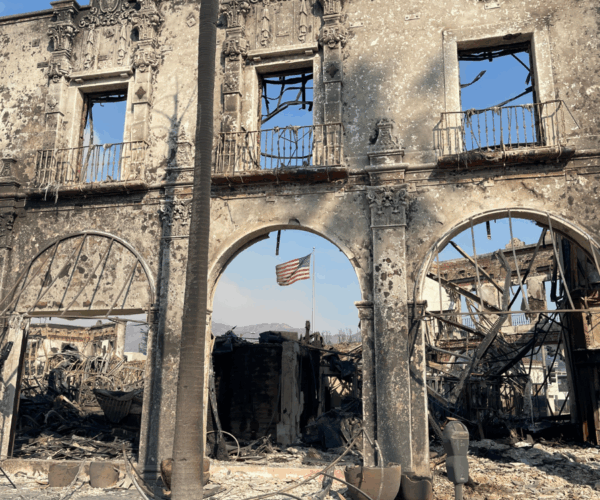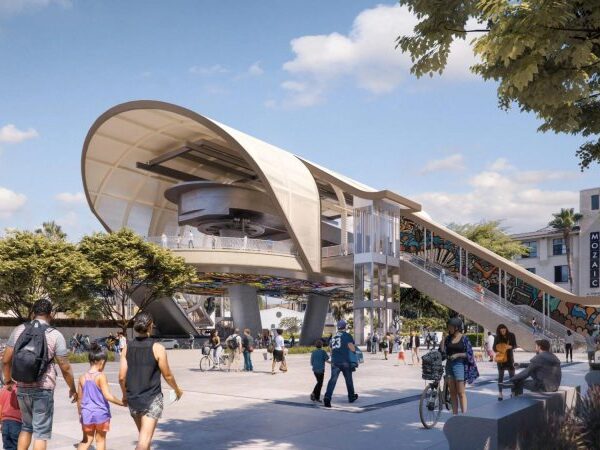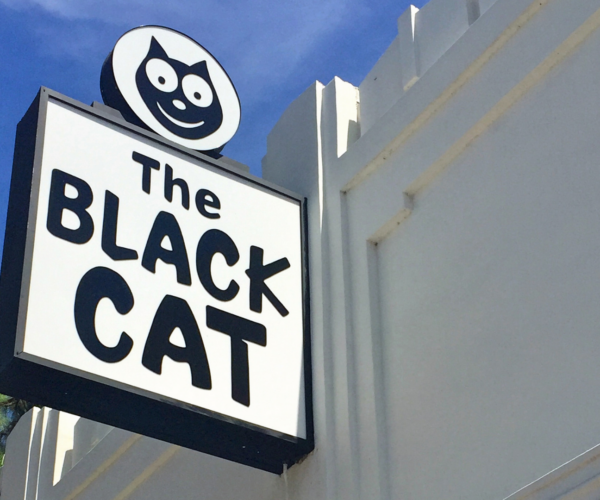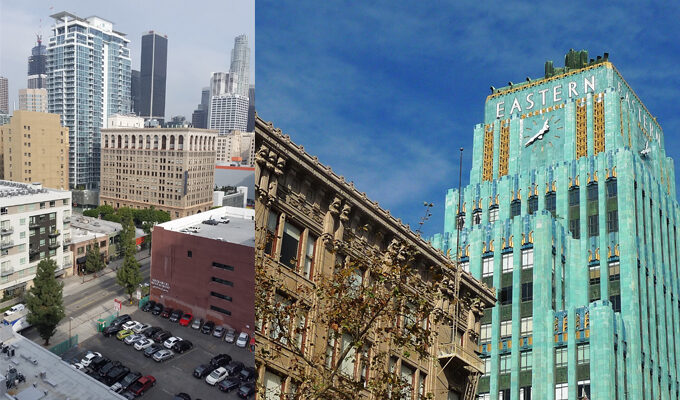
Active
High-Rise Development in Downtown L.A.
Proposed projects in downtown have raised questions about the scale of new development in historic urban neighborhoods.
Active
Stay informed on active issues throughout L.A. County.
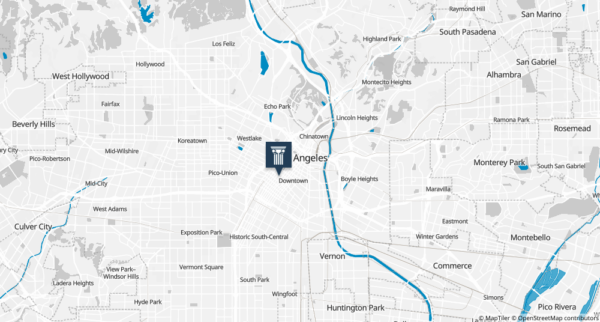
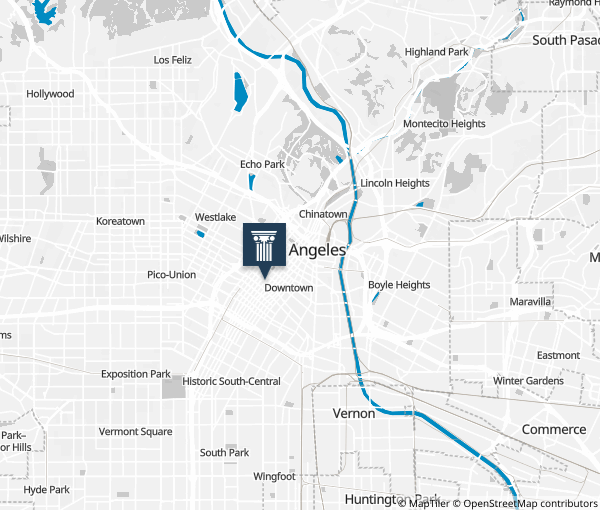
Overview
The ongoing revitalization of downtown Los Angeles has brought about a new wave of high-rise development, spurring discussions over the compatibility of new buildings in historic districts. While much of downtown’s success in recent years can be attributed to the rehabilitation and adaptive reuse of the neighborhood’s historic building stock, the demand for higher density and new infill construction is also increasing tenfold.
The current development boom brings greater vitality, and much-needed investment to downtown, an objective the Conservancy and many others have worked toward for years.
When sensitive to its context, new construction can help define and reinforce the neighborhood’s unique historic character.
Nonetheless, several proposed developments reveal many challenges inherent to contemporary design in a historic setting, including the appropriateness of scale, massing, materials, and proportion.
The Conservancy typically does not comment on new construction projects. Yet we are increasingly stepping into this arena because of the cumulative effects these developments have on historic places.
For instance, after more than a century as a remarkably cohesive neighborhood of mid-rise buildings, the Historic Core is now littered with high-rise towers of twenty to thirty stories that will dwarf their neighbors. These new developments introduce entirely new proportions, block iconic views, and create looming shadows. Even details that seem innocuous, such as projecting balconies on the main facade, change the feel of the street.
Recently, we have provided comments on projects in downtown that raise questions about scale, massing, and contextual design in the Historic Core, including locations within the Spring Street Financial District and the Broadway Theatre and Commercial District. Both districts are listed in the National Register of Historic Places.
The Conservancy has commented on the following high-rise projects in downtown: The Albany; The Alexan at 9th and Hill; Broadway@4th; 601 S. Main SB Omega Project; Spring Street Hotel; Equity Residential Mixed-Use Project (previously Beacon on Hill); and 5th and Hill Project.
The number of downtown high-rises that are proposed or already approved underscores the need for greater clarity and guidance. To better direct this development, the Conservancy strongly believes that there is an urgent need to revisit and update the City’s Downtown Design Guide.
About This Issue
Together with adaptive reuse, new construction has always had an important role in the revitalization of downtown. It is a core component of the original Historic Downtown Los Angeles Design Guidelines, produced for the Conservancy in 2002. The document became the basis for the City’s Broadway Design Guide and shares many similarities with the Downtown Design Guide, both adopted in 2009.
Compatibility within a historic context can be a subjective concept, as it should allow for the exploration of dynamic new ideas and modern design concepts without being overly constricting or trying to mimic earlier architectural styles.
According to the Downtown Design Guide, new construction should “respect historically significant districts and buildings, including massing and scale, and neighborhood context.” The Principles and Guidelines of the Downtown Los Angeles Neighborhood Council further state that “new designs should take cues from the existing neighborhood character as well as address existing building typologies, densities, and intensities of use.”
The National Park Service also offers some guidance towards the use and application of the Secretary of the Interior’s Standards in a district or neighborhood setting. It maintains that “introducing a new building or landscape feature that is out of scale or otherwise inappropriate to the setting’s historic character” is not recommended.
Our Position
While the Conservancy generally supports increased density and believes there is a clear role for high-rise construction in parts of downtown, such as South Park, we have a number of ongoing concerns over the cumulative impacts of out-of-scale development in downtown’s historic neighborhoods.
We greatly value the opportunity to work with the development community and neighborhood stakeholders, including the newly formed Society for the Preservation of Downtown Los Angeles, to ensure that proposed infill construction is sensitive to and compatible with the Historic Core.
We feel that progress has been made on a handful of projects, and we appreciate changes in their designs that better relate to the surrounding neighborhood context and improve the pedestrian experience.
Nonetheless, we believe that high-rise towers introduce a much different scale and overall feel than currently exists in the Historic Core.
While we are not opposed to increased height if appropriate setbacks and proportions are incorporated, high-rise construction does have the potential to negatively impact shade and shadow, as well as obscure important viewsheds. In the case of The Alexan, while new setbacks have been introduced to the proposed tower, it will inevitably block significant portions of the iconic Eastern Columbia Lofts.
We have also raised concerns over the introduction of projecting balconies on primary facades, a common feature of new construction projects. We believe this design element greatly deviates from the character of the Historic Core and is ultimately incompatible with the existing rhythm and feel of the neighborhood.
Overall, we believe that these questions about neighborhood compatibility point to larger issues downtown. We remain concerned about the potential long-term effects of high-rise development on the integrity of the Spring Street Financial District and the Broadway Theatre and Commercial District.
We will continue to urge the City of Los Angeles to conduct a full study of cumulative impacts as part of any environmental analysis, and we strongly recommend updating the Downtown Design Guide to provide greater clarity over the appropriateness of new construction in a historic context.
Issue Resources
- Broadway Design Guide, 2009
- Downtown Design Guide, 2009
- Society for the Preservation of Downtown Los Angeles
- "Development with 20-Story Tower Breaks Ground behind Hollywood ArcLight," Curbed LA, June 22, 2018
- “City Hall Reviews This Luxury High-Rise Apartment Building,” City Watch Los Angeles, June 7, 2018
- “Planning Commission Signs off on 35-Story Tower for Arts District,” Curbed LA, June 2, 2018
- "High Tensions Over a High-Rise," Downtown News, January 19, 2016
- "Rendering Revealed for Slim DTLA Hotel Tower," Urbanize LA, October 19, 2015
- "New High-Rise on Broadway Would Be One of the Tallest in Southland," Los Angeles Times, February 27, 2014
- "Mapping The Rise of LA's Tallest Towers," Curbed LA, December 26, 2019.
- Conservancy comments on The Alexan Project, February 24, 2017
- Conservancy comments on 601 S. Main SB Omega Project, January 25, 2017
- Conservancy comments on 601 S. Main SB Omega Project, October 19, 2016
- Conservancy comments on Beacon on Hill Project, June 21, 2016
- Conservancy comments on Spring Street Hotel, Notice of Preparation, October 29, 2015
- Conservancy comments on Broadway@4th Project, February 6, 2015
